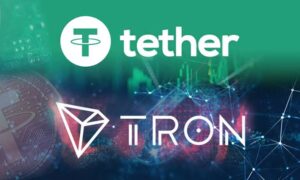
Although Ethereum has made considerable progress, its future growth trajectory is uncertain, according to a new report by CoinShares. While the blockchain’s current success is built on two foundational pillars—marketplaces and stablecoins—the report raises questions about its ability to evolve beyond these use cases.
Decentralized Exchanges and Stablecoins Leading the Way
The report, published on September 24, reveals that decentralized exchanges (DEXs) and stablecoins now account for over half of Ethereum’s applications. As the backbone of many decentralized finance (DeFi) projects, Ethereum is thriving, with DEXs and NFT platforms significantly contributing to its role in the crypto ecosystem.
One major player, Uniswap, generated about 15% of all transaction fees on the network during the first half of 2024. Similarly, OpenSea, an NFT marketplace, was also highlighted as a key contributor, although its impact has decreased since peaking at $572 million in fees during the first half of 2022.
On the stablecoin front, over $135 billion worth of tokens, including major players like Tether (USDT) and USD Coin (USDC), are circulating on the Ethereum blockchain. These stablecoins rely on Ethereum’s infrastructure to maintain their value and provide liquidity to DeFi platforms, while also facilitating global payments.
Uncertainty Around Ethereum’s Future Use Cases
Despite these successes, the CoinShares report raises an important question about Ethereum’s future. While the blockchain’s transition to Proof-of-Stake (PoS) and the development of Layer 2 (L2) scaling solutions have put it in a strong position, the demand for new decentralized applications (dApps) remains uncertain.
The report suggests that Ethereum’s long-term growth will depend on its ability to move beyond its current focus on marketplaces and stablecoins. The potential for adoption in sectors like enterprise solutions, gaming, and the metaverse exists, but real-world demand will be essential. Ethereum will need to attract developers to push the boundaries of what blockchain technology can offer in everyday life.
James Butterfill, head of research at CoinShares, emphasized that Ethereum’s value is primarily driven by transaction demand rather than staking rewards. He also noted that a small number of services—mostly related to speculation and basic value transfers—are responsible for the majority of the network’s transaction fees.
To ensure sustainable growth, Butterfill concluded, Ethereum must focus on building more practical, long-lasting use cases that can support its long-term value, rather than relying on its current speculative-driven applications.






